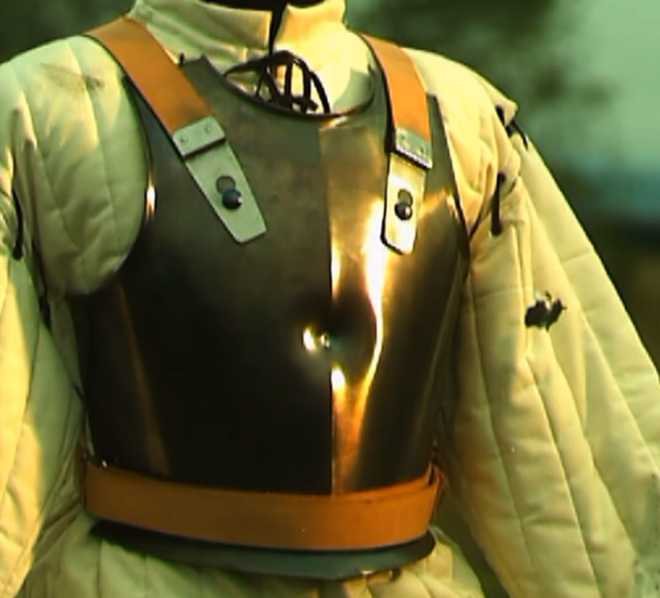Today, we often talk about body armour in both military and civilian contexts. Advanced modern body armour is now capable of stopping powerful rounds but the use of armour in warfare dates back centuries. Overmatch is no new concept. This week I came across a great slow motion video showing just how effective plate armour could be.
The 15th century saw the emergence of firearms in Europe and the refinement of gunpowder manufacture which increased its strength and availability. The increasing prevalence of firearms, combined with other factors, saw the decline in the use of suits of plate armour, although they remained in limited use until the mid-1600s. Despite this Cuirass or breastplates continued to be popular, with armour manufacturers attempting to create Cuirasses which could withstand a strike from a bullet.

The remains of a musket ball bounce off the breastplate (Peter O. Stecher)
This ‘bulletproof’ armour made from heat treated medium-carbon steel was expensive and throughout the 15th and 16th centuries only the wealthy could afford what became known as ‘proofed’ or ‘siege’ armour. The method of proofing involved an armourer firing one or more rounds at a Cuirass to prove its quality and effectiveness. It’s important to remember that then, as now, not all armour was created equally and while some armour would withstand a musket ball, the Cuirass worn by the average soldier was rated to deflect a pike or sword cut.
In the video below we see some slow-motion footage of a recreation of one of these proofing tests. Sadly, it’s unclear just what calibre the ball was used, what the powder charge was, what the range was or what quality steel the replica breastplate was made from. But the video does replicate contemporary results. Here’s a photo of some contemporary proofed armour.
It’s also interesting to note that the musket in the video appears to be a replica combination Doglock/Matchlock. The ‘Doglock’ (more properly categorised as a Type 2 English lock) has a dog catch, a type of safety lock which hooked into the back of the cock, these were common during the 17th century. (Edit: Thanks to Jonathan Ferguson for the extra information on lock type.)

Combination Flintlock/Matchlock musket (Peter O. Stecher)
The Cuirass has an angled central ridge which adds strength, the round strikes this almost dead centre. The ball then deforms, leaving a deep dent in the armour before bouncing off. The target is wearing a padded canvas coat, commonly worn by European cavalry during the 17th century, which would have helped absorb the impact. I can’t speak for how authentic the Cuirass is, whether it’s made from modern steel or not but period examples of so-called proofed armour survive with similar bullet dents. So while the video doesn’t offer much scientific proof it is an interesting recreation of a contemporary armourer’s proofing test.
Sources:
 Your Privacy Choices
Your Privacy Choices
